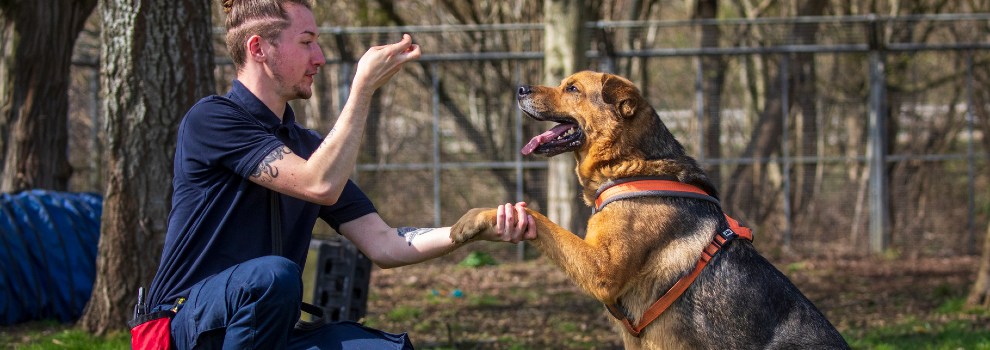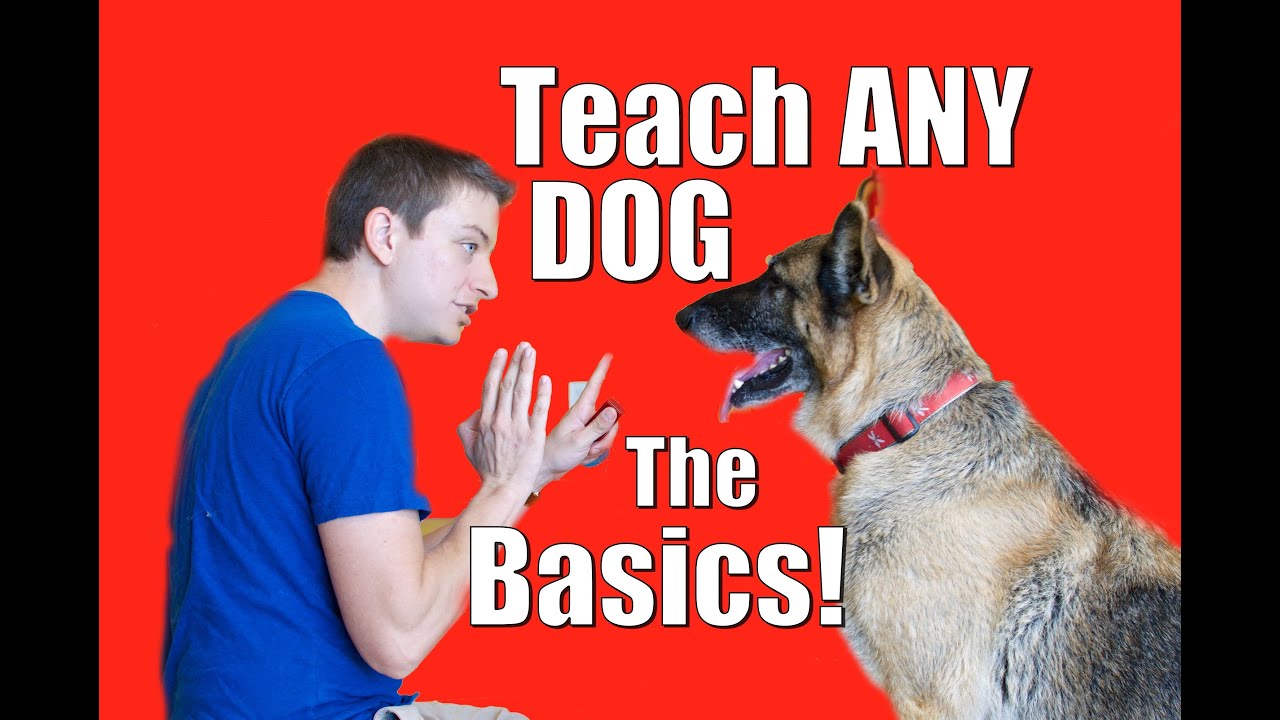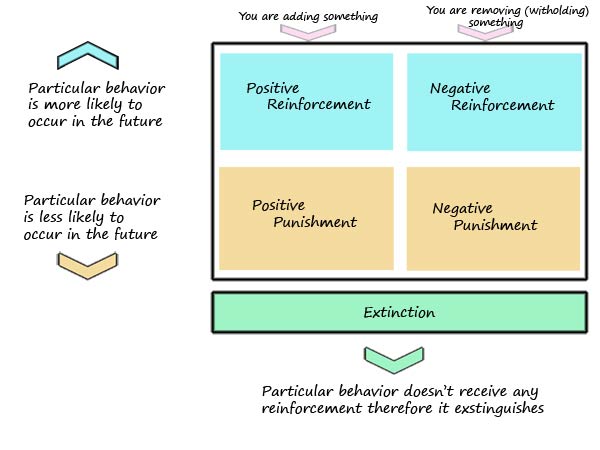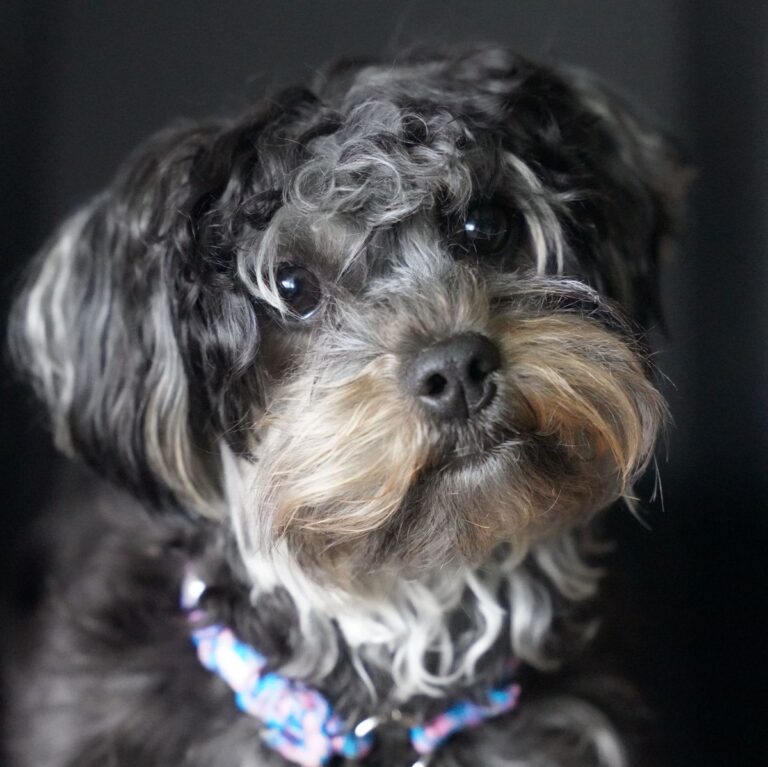Dog Training Tips for Beginners at Home: Learn the Essentials
Last Updated on September 9, 2024 by Petpalace54
To train your dog at home as a beginner, create a training schedule, use positive reinforcement, and keep sessions short. Choose a training time with no distractions and schedule training before meals.
Never punish your furry friend but make the reward worthwhile. Training your dog at home as a beginner can be a daunting process, but it is crucial if you want a well-behaved, obedient, and happy pup. You don’t have to spend a lot of money to get professional training services as many tips and techniques can be done at home with a little patience, consistency, and positive reinforcement.
With the right mindset, tools, and a few of the best dog training tips for beginners, you can help your dog learn good behaviors, commands, and grow a strong bond with your furry friend. We’ll cover some essential tips to get started on training your dog at home.
Table of Contents
- 1 Establishing A Training Schedule
- 2 Teaching Basic Commands
- 3 Tips For Effective Training
- 4 Must-have Training Tools
- 5 Recommended Training Resources
- 6 Online Training Videos To Watch
- 7 Training Tips From Experts
- 8 Other Important Dog Training Topics
- 9 Frequently Asked Questions Of Dog Training Tips For Beginners At Home
- 10 Conclusion
Establishing A Training Schedule
Establishing a training schedule is crucial for beginner dog trainers at home. Consistency is key, and keeping sessions short with positive reinforcement and small treats can ensure your dog’s success. Set aside a distraction-free time and schedule training before meals to keep your dog focused.
Creating a training schedule is essential when you start training your dog at home. It’s crucial to maintain a routine to get the best results and ensure that your dog doesn’t get overwhelmed and stressed with excessive training. Here are some tips that will help you establish a successful training schedule.Create A Schedule
To begin, you need to develop a training schedule that works best for you and your dog. Determine how much you would like to train your dog each day and make a plan that you can stick to, ensuring it’s feasible and fits into your daily routine. Some dog owners prefer to train their dogs early in the morning, while others prefer to do so in the evening. Pick a time that works best for you and your pet, and stick to it.Keep Sessions Short
Dogs are prone to lose focus, making it essential to keep training sessions brief, ensuring that your dog is engaged and attentive throughout the exercise. Keep each training session no more than 15-20 minutes and ensure to leave a gap between sessions to avoid your dog getting overwhelmed.Choose An Appropriate Time
Make sure to pick a time when your dog is active and well-rested throughout the day. Dogs are typically energized after a nice afternoon nap and post-mealtime. Selecting a time when your dog is feeling fresh and relaxed will help to concentrate better during the training and reduce the frustration that may arise from exhaustion.Having a regular dog training schedule is essential for success. A routine schedule helps to build your dog’s confidence, making the training process more enjoyable and more comfortable for both you and your pet. So, go ahead and create a schedule that works best for you and your dog to achieve the best possible results.Teaching Basic Commands
When it comes to teaching basic commands to your dog, consistency and patience are key. Use positive reinforcement and small treats, and choose a training time with no distractions. Keep training sessions short and fun to set your dog up for success.
These simple yet powerful dog training tips for beginners can be done at home with your furry friend.
Introduce Basic Cues:
When you are teaching your dog basic commands like “sit,” “stay,” “come,” or “heel,” it is essential to start with simple and instinctual instructions that the dog can follow easily. Use one-word cues like “sit” and “stay” and repeat them multiple times. Once the dog understands and starts following a single command, you can start mixing them up.
Say Cue Words Once:
When you use a cue word for a specific command, make sure you say it once and wait for a response from your dog. Repeating the cue often confuses the dog, and he can lose focus or even pick up the wrong command. Pick a word that is easy to say, clearly audible, and understood by your dog.
Use Positive Reinforcement:
To make your dog learn the command and ensure they remember it, use positive reinforcement. Start with small treats in the beginning, then gradually increase the gap between reinforcements as your dog becomes better at following the commands. This makes your dog more enthusiastic about learning and obeying your commands, and less likely to forget them.
Incorporate Treats:
When you are teaching your dog basic commands, incorporating treats is key to making your dog focus and learn. Keep treats in small portions to avoid them from losing interest or getting too full too quickly. Utilizing treats also makes the learning experience fun and rewarding for the dog.
By following these tips, the process of teaching your dog basic commands can be easier and more effective. Consistency and patience are critical, so don’t get discouraged if your dog doesn’t understand a command right away. Always remember to use positive reinforcement and treats to make the learning process fun and enjoyable for your furry friend.
Tips For Effective Training
Effective dog training for beginners at home requires consistency, patience, and positive reinforcement. Keep training sessions short, choose a distraction-free time, and use small treats as a reward. Never punish your dog and schedule training before meals.
Training a dog can be a fun and rewarding experience, but it can also be challenging, especially for beginners. To make the most out of your training sessions, it’s important to follow these tips for effective training.Minimize Distractions
Dogs can easily get distracted, especially in a new environment or when they encounter new people or animals. To prevent this, choose a quiet area in your home where your dog can focus on the training. Remove any potential distractions that could divert their attention. Also, make sure to switch off any TVs or radios.Make Sessions Engaging
Dogs learn best when training is fun and engaging. Incorporate playtime and toys into their training sessions. Dogs love the opportunity to play fetch, tug, or chase, which can help keep them motivated. You can also use treats as a reward for completing a task, but make sure to choose small treats to avoid overfeeding.End Each Session On A Positive Note
It’s important to end each training session on a positive note, even if the session wasn’t successful. This can help keep your dog motivated and eager to participate in future sessions. Reward your dog with a treat or extra playtime for their efforts.Never Punish
Punishing a dog during training can be counterproductive. Dogs respond better to positive reinforcement, which means rewarding good behavior instead of punishing bad behavior. Avoid using physical punishment or yelling at your dog during training. This can cause them to fear you and lose trust in you.To sum up, keeping your training sessions engaging, positive, and distraction-free can go a long way in teaching your four-legged friend new skills. Remember to always use positive reinforcement instead of punishment and end each session on a positive note. Happy training!
Credit: www.rspca.org.uk
Must-have Training Tools
Every newbie dog owner should have training tools to teach their furry friend basic commands such as “sit”, “stay”, and “come”. Tools such as a clicker, treats, and a leash are must-haves to aid in training and help establish obedience in the home environment.
Training your dog at home can be a fun and rewarding experience, but it’s important to have the right tools for the job. Here are some must-have training tools to help you get started:Agility Training Equipment
Agility training is a great way to exercise your dog, build their confidence and improve their overall obedience. Agility training equipment, such as agility tunnels, weave poles and jumps, can be purchased online or at your local pet store. Remember, start small and work your way up to more challenging courses as your dog becomes more proficient.Training Clicker Wristband
A training clicker wristband is an inexpensive, yet effective way to communicate with your dog during training sessions. With just a simple click, your dog will know when they’ve done something right. The wristband version is particularly helpful as it keeps your hands free and the clicker within easy reach.Silent Dog Whistle
A silent dog whistle is a great tool for training your dog to come when called. As the whistle is silent to human ears, it won’t disturb your neighbors but the high pitched sound will grab your dog’s attention. You can use this whistle in combination with a vocal cue, such as “come”, to train your dog to respond quickly.Training Treats
Training treats are an essential tool for positive reinforcement training. The key is to find small, soft treats that your dog loves and only use them during training sessions. This will help your dog associate good behavior with a tasty reward. Remember to use treats in moderation to avoid overfeeding your dog.In conclusion, having the right tools is essential for successful at-home dog training. Be patient, consistent and always use positive reinforcement methods during your training sessions. With the right tools and a little effort, you’ll have a well-behaved companion in no time.Recommended Training Resources
There are several recommended resources available for beginners who want to train their dogs at home. These include YouTube channels such as Zak George’s Dog Training Revolution and McCann Dog Training, books like Dog Training for Dummies and The Other End of the Leash, as well as tools like pet training clickers and treats.
It’s important to create a training schedule, use positive reinforcement, and keep sessions short to ensure success.
If you’re looking for reliable and effective resources to help you train your furry companion, you’ve come to the right place! These are some of the most recommended training resources for beginners:Dog Training For Dummies
Written by Jack and Wendy Volhard, Dog Training For Dummies is a comprehensive guide that covers everything you need to know about training your dog, from obedience training to advanced tricks. This book is perfect for beginners, as it breaks down each lesson into easy-to-understand steps.The Other End Of The Leash
Written by Patricia B. McConnell, The Other End of The Leash is an insightful read that explores the communication gap between humans and dogs. McConnell uses her experience as an animal behaviorist to provide practical training advice that emphasizes the importance of empathy and mutual understanding.Lucky Dog Lessons
Looking for a book that covers the basics while also providing more advanced training techniques? Lucky Dog Lessons by Brandon McMillan is just what you need. McMillan’s techniques have helped countless rescue dogs become well-behaved household pets, and the tips and tricks he shares in this book are sure to help you and your pup.The Big Book Of Tricks For The Best Dog Ever
Who doesn’t love a good trick? The Big Book of Tricks for the Best Dog Ever by Larry Kay and Chris Perondi is packed with over 100 fun and engaging tricks that will keep your dog entertained while also improving their obedience and agility. From basic commands to advanced stunts, this book has it all.When it comes to training resources, it’s important to choose ones that align with your personal training style and your dog’s individual needs. Whether you prefer books, online courses, or in-person training, the most important thing is to stick with it and be consistent. Remember, with patience and a positive attitude, you and your furry friend can achieve great things!Online Training Videos To Watch
Looking for online training videos to help you train your dog at home? Check out Zak George’s Dog Training Revolution, McCann Dog Training, and Open Farm for a variety of tips and techniques. Remember to keep sessions short, use positive reinforcement, and set your dog up for success.
Avoid punishing your pet, and make sure training sessions are fun and engaging.
If you’re a beginner dog owner looking for tips for your furry friend, you’re in luck! There are plenty of online training videos available to help you get started. By following these training sessions, you can teach your dog everything from basic obedience to more advanced tricks.Zak George’s Dog Training Revolution
One of the most popular dog trainers on YouTube today is Zak George. His channel, “Zak George’s Dog Training Revolution,” has over 3 million subscribers and features a wide range of training videos suitable for beginners. In his videos, Zak covers everything from basic obedience to more advanced tricks. Some of the most popular videos on his channel include “Eye to Eye,” “Keep the Pace,” and “Positive Reinforcement.”Mccann Dog Training
Another popular YouTube channel for dog training is McCann Dog Training. With over 330,000 subscribers, this channel has a wide range of training videos suitable for beginners. Some of the most popular videos on the channel include “Teaching Posture,” “Toy Retrieve Exercise,” and “Nail Clipping Exercise.” By following the tips and advice provided in these videos, you can help your dog become a well-behaved and obedient companion.In addition to online training videos, there are many books, tools, and treats available to help you with your dog training journey. Some popular training tools include dog agility training equipment, pet training clickers, and silent dog whistles. When it comes to treats, consider options like Zuke’s Mini Naturals Dog Treats or Buddy Biscuits Training Bits. By using these resources and sticking to a consistent training schedule, you can help your dog become a happy and well-behaved member of your family. Remember, consistency and patience are key, and always make sure to set your dog up for success and never punish them.Training Tips From Experts
For beginners training their dog at home, experts recommend creating a consistent, positive training schedule with short sessions and rewarding good behavior with small treats. Choose a distraction-free time for training and avoid punishing your dog, instead setting them up for success by teaching basic commands with cue words.
Go At Your Dog’s Pace
When starting dog training, beginners tend to jump the gun and want their dog to achieve overnight success, but that’s not realistic. The key is to go at your dog’s pace and work within their comfort zone. Training should be a fun experience for your dog, not a frustrating one. Watch for signs of burnout like yawning, whining, and avoiding eye contact. If you notice any of these signs, slow down and take a break. The last thing you want is for your dog to dread training sessions.Consistency And Patience
Consistency is critical when it comes to training your dog. It’s important to keep the training sessions short but regular. Remember, you are trying to teach new behavior, which requires patience. As a beginner, it’s easy to get frustrated when your dog is not responding as quickly as you’d like. However, it’s important to resist the urge to get angry or punish your dog. Instead, be patient and consistent in your training approach.Use Worthwhile Rewards
Positive reinforcement is the cornerstone of dog training. Dogs respond well to praise, attention, and food rewards. However, treats are not created equal. To keep your dog motivated, use high-value treats that they love. If you give your dog a treat that they don’t like, they may become disinterested and refuse to work for it. When selecting a reward, consider the size, texture, and smell of the treat.Set Your Dog Up For Success
When it comes to training your dog, setting them up for success is key. Begin by selecting a distraction-free environment to train your dog. Keep your training sessions short, and always end on a positive note. Ensure that you train one command at a time. Don’t overwhelm your dog with too many commands that they may not understand yet. And finally, be there for your dog and support them throughout the training process.In conclusion, dog training can be overwhelming, but it doesn’t have to be. Start small, go at your dog’s pace, be patient, and reward your dog’s good behavior. Consistency is crucial in the training process, and it’s not just for the pet, but also the owner. A positive mindset, patience, consistency, and a good dose of love and encouragement will ensure you and your dog have an enjoyable training experience.
Credit: www.yogabasics.com
Other Important Dog Training Topics
In addition to basic obedience training, there are other important dog training topics for beginners at home to consider. These include crate training, socialization, leash training, and addressing problem behaviors such as barking and chewing. With consistency and positive reinforcement, dogs can learn quickly and effectively from their owners in a comfortable home environment.
Obedience Training
Training your dog to respond to basic commands is crucial for your dog’s safety and well-being. This training requires consistently practicing commands such as “sit,” “stay” and “come.” To ensure effective obedience training, use positive reinforcement techniques to encourage good behavior and build a trusting relationship between you and your dog.House Training
Nearly every dog owner dreads the process of house training their furry companion. However, with patience and consistency, you can quickly train your dog to relieve themselves where you prefer. Ensure you take your dog outside regularly, especially after meals, and reward them with plenty of praise and treats when they go to the bathroom in the correct spot.Cadet Pet – Dog Obedience Tips
Cadet Pet offers a range of dog training tips and methods, including obedience training, house training, and more. They suggest starting with simple commands such as “sit” and “stay” and gradually increasing the difficulty level as your dog progresses. Encourage good behavior with treats, positive reinforcement, and plenty of praise.Top Training Tips By Rspca
The RSPCA is known for their animal welfare work, and their dog training tips are helpful for beginners. They emphasize the importance of setting clear boundaries, practicing consistency and patience, making the rewards worthwhile, setting your dog up for success, and never punishing them for bad behavior.Overall, dog training requires patience, consistency, and positive reinforcement. By practicing obedience and house training with your furry friend and using valuable resources from places like Cadet Pet and RSPCA, you can create a healthy bond that will last a lifetime.:strip_icc()/Steps-to-train-your-dog-1118273-7f3a74792b15472bb0d1f4884bd95875.jpg)
Credit: www.thesprucepets.com
Frequently Asked Questions Of Dog Training Tips For Beginners At Home
What Are The 7 Basic Commands For Dog Training?
The 7 basic commands for dog training are: sit, stay, heel, come, down, off, and no. It is important to use positive reinforcement and consistency during training sessions. Reward good behavior and avoid punishing your dog. Keep training sessions short and free of distractions for better results.
What Are The 5 Golden Rules Of Dog Training?
The 5 golden rules of dog training are to go at the dog’s pace, be consistent and patient, make the reward worthwhile, set the dog up for success, and never punish. These guidelines ensure effective and positive dog training for beginners and experienced trainers alike.
How Do You Train A Dog At Home For Beginners?
To train a dog at home for beginners, create a training schedule, learn basic commands like sit and stay, use positive reinforcement, and choose a training time with no distractions. Make sure training sessions are short, fun, and engaging, and end on a positive note.
Avoid punishing your dog and be consistent and patient with the training process.
What Are The 5 Steps To Train A Dog?
The 5 steps to train a dog are keeping the training session short and consistent, using positive reinforcement and small treats, teaching basic commands, scheduling training time with no distractions, and setting the dog up for success. Never punish your dog but make the reward for success worthwhile.
Remember, consistency and patience are key.
Conclusion
In a nutshell, training your furry friend at home can be rewarding, as long as you remain consistent, patient, and never punish your dog. Make sure to create a training schedule, teach basic commands, use positive reinforcement, and choose a training time with no distractions.
Last but not least, make sure your training sessions are fun and engaging, using a variety of rewards. Above all, enjoy the process and bond with your furry companion while training them to be their best selves.






